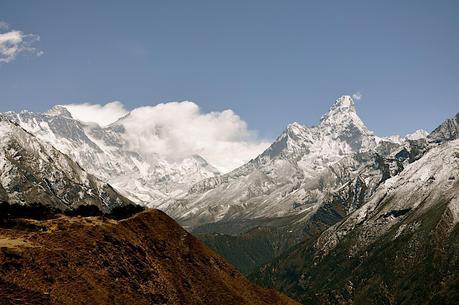 It was a rough fall climbing season in Nepal with a lot of mountaineers heading home without a successful summit. According to an article published in the Himalayan Times, expeditions that spent the Autumn in the Central Asian country only had a 20% success rate due to unusually bad weather across the region.
It was a rough fall climbing season in Nepal with a lot of mountaineers heading home without a successful summit. According to an article published in the Himalayan Times, expeditions that spent the Autumn in the Central Asian country only had a 20% success rate due to unusually bad weather across the region.According to the article, there were 1385 foreign climbers, spread out over 183 permitted expeditions on 42 peaks in Nepal last fall. Those mountains that saw teams ranged from Nar Phu at 5921 meters (19,425 ft) to the 8163 meter (26,781 ft) Manaslu. Over the course of the season 242 climbers managed to record a total of 382 summits, with some bagging multiple peaks. Of those, the bulk of the successful climbs came on Ama Dablam and Manaslu, which saw 145 and 114 summits respectively. Furthermore, only Nanga Mari (6547 m/21,479 ft) and Nar Phu saw a 100% success rate with four and nine summits.
The other 8000-meter peaks that saw action in the fall included Makalu (8463 m/27,765 ft), Dhaulagiri (8167 m/26,795 ft), and Lhotse (8516 m/27,940 ft). All three of those mountains turned back all comers, with no teams recording a summit on any of them.
Obviously the poor weather in the Himalaya played a role in this dramatic drop-off in the number of fall summits. You may recall that a massive blizzard hit Nepal back in October, claiming the lives of more than 40 trekkers. That snow storm closed passes and dumped more than a meter of fresh powder in some areas, which hindered both trekking and climbing expeditions alike. Teams on Lhotse and Dhaulagiri in particular were hit hard by the poor weather, which was unusually bad even before the blizzard hit.
Still, this is an incredibly low success rate on many mountains that are often used as tune-ups for the bigger peaks. Traditionally those peaks see solid numbers of climbers reach the top as they build skills and experience for Everest or other Himalayan mountains. The article from the Himalayan Times only offers up the statistics however, and doesn't provide any further insight into why the success rate was so low this year.
We'll have to wait to see if this will become a trend or if the fall of 2014 was an anomaly. But with climate change impacting weather across the planet, it is possible that we could see even more big storms and extremely bad weather in the future too.

